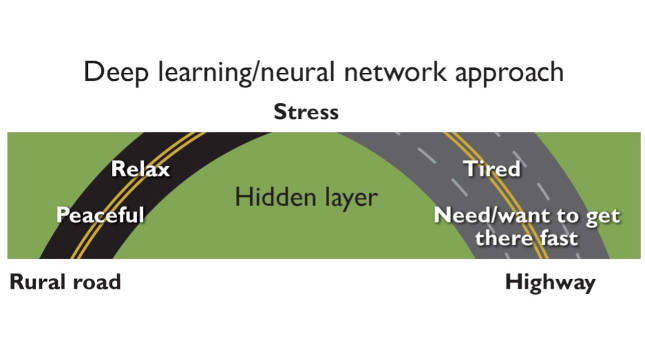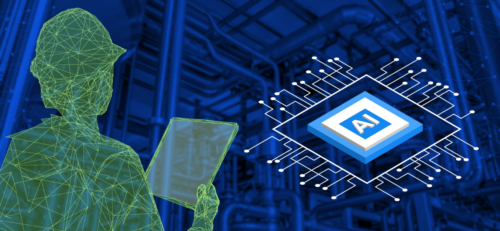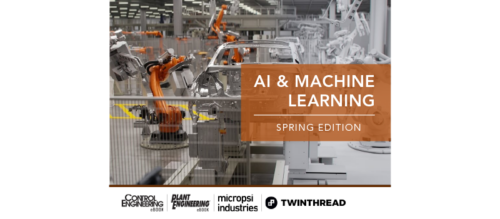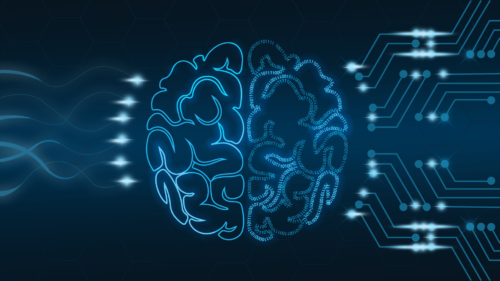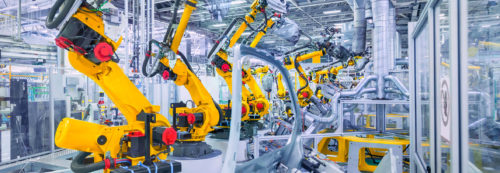How AI, ML and neural networks differ and work together
While similar, artificial intelligence (AI), machine learning (ML) deep learning and neural networks have specific tasks and roles.
Learning Objectives
- Artificial intelligence (AI) and machine learning (ML) can make decision in place of a human at a higher level.
- Machine learning is a slower and longer process with a lot of analysis and programming.
- Using AI/ML can provide new insights and give companies the tools to help facilities run more efficiently.
AI and Machine Learning Insights
- Artificial intelligence (AI) is about the machine’s ability to make decisions like a human.
- Machine learning (ML) is a longer process where the system gathers data and decides based on the data and stores the information.
- Neural networks and deep learning are similar, but the difference is in the hidden layer. Neural networks have a shallower hidden layer than deep learning, which can have many levels.
Artificial intelligence/machine learning (AI/ML) technologies are complex concepts that will see the creation of ever-smarter machines. To understand AI/ML, it is important to have a working knowledge of the terminology and the differences between the various concepts. Many have used words such as artificial intelligence, machine learning, deep learning and neural networks interchangeably to describe different aspects of smart machine technology. The truth is, they’re quite different in the tasks being performed and how.
Understanding AI and ML in relation to the human decision-making process and providing examples will help explain how AI and ML extend into the industrial world.
Artificial intelligence (AI) definition
AI is the ability of a machine to make decisions as if a human were making the decisions. The machine can take a situation that is posed to it repeatedly and choose to process it in different ways, even if on the surface, the situation seems identical each time.
A human example would be the selection of a driving route. My parents recently moved to a town in the neighboring county. When I visit them, I can select from two different routes. Each route has advantages and disadvantages. The route I select is based on my perceptions of those advantages and disadvantages, filtered through what I am thinking and feeling at that time. In a similar way, a good AI will “consider” data beyond sensor readings and machine conditions to run smartly and efficiently.
AI is distinguished from machine learning (ML) in that AI is the actual decision-making process that gives the appearance of intelligence, while ML is the process by which the machine gathers the information to make the decisions and feed the decision-making process.
Machine learning (ML) definition
Much like a human, a machine must gather data and draw conclusions to decide. This requires time to collect enough data to represent the system being run and time to analyze data to draw results. Data collection involves trying different parameters of operation to see the impact of the results. This is referred to as “teaching the machine.”
Data analysis is often called “reading the stories in the data” and then encapsulating the stories into simple conclusions/rules to be easily referred to later. This is the ML process.
Drawing on the driving analogy again, I settled on two good routes after repeated drives. Route A is a pleasant, but winding country road, so it isn’t the fastest way to my parents’ house. However, the drive time is a consistent 60 minutes, and rarely varies more than a couple of minutes faster or slower. Route B is a direct highway that is often much faster, but semi traffic and stop lights can affect the drive time. Other route differences can impact the choice. If a self-driving car were to exercise ML principles on my routes, it would read the following stories from collected data.
Route A has almost consistent driving time. If my purpose is to pick up mom for an appointment and ensure she is on time, this would be the way to go. But there are no services along the route, so if I am low on gas, do I want to go the route with no gas stations? If I am stressed, do I go the peaceful back route, or do I want to have an opportunity to stress-eat on the way? If dad is in trouble, do I take the potentially much speedier Route B? Another story on route B is that drive times differ at different times of the day.

An autonomous vehicle would use ML to analyze trip data and select the best route. Courtesy: Phoenix Contact
ML is combing through all the data for a process, parsing it in many ways, and finding these stories, rules, or correlations.
Biodiesel production systems are an example of ML in an industrial application. If ML can be accomplished by a machine processing soybean into biodiesel fuel, that machine will see quality and efficiency gains. This is accomplished by developing a body of ML rules to consider humidity, water content, temperature, and maybe even soil chemistry, if available. This machine would refine its processes on the fly, resulting in ever-increasing yields.
Neural networks and deep learning definitions
ML is the development of a collection of simple rules to make decisions about a process. There are important correlations between conditions and responses that involve more complex interactions between data points than simple surface rules of ML.
These complex interactions involve a “hidden layer.” Hidden layer interactions mean decisions don’t always follow straight from question to output, but they can bump on other concerns/conditions on the way from question to action. For instance, I need to get to mom’s house on time (but my gas is low, or my car is acting funny, do I want to risk breaking down in the middle of nowhere, I’m stressed, and the hills and fields would be peaceful, but a milkshake from a drive-through would help me smile), so I am going to select Route B.
This hidden layer is the difference between neural networks/deep learning and ML. This form of decision-making approximates how the human brain’s neurons interact.

The hidden layer considers multiple inputs to make a decision, so it does not necessarily follow a straight path. Courtesy: Phoenix Contact
Difference between deep learning, neural networks
The difference between deep learning and neural networks is the hidden layer’s depth. In general, a neural network will have a much shallower hidden layer than a system implementing deep learning, which can have many levels in the hidden layer.
Francisco Alcala, an automation engineer for CDM Smith, cited the use of deep learning/neural networks in facial recognition as an example. When someone recognizes a face, despite glasses, sunglasses, a mustache, or not having seen someone since high school graduation, this is the result of the interactions in the hidden layer of a neural network or deep learning system.
Visual recognition is one of the driving forces in the development of deep learning models. Facial recognition has obvious applications in security and access control. Recognition of labels, containers, or the color of a product in a high-speed manufacturing environment can impact quality and reduce waste.
Alcala’s experience is in water/wastewater, and he has developed supervisory control and data acquisition (SCADA) programs that teach water systems to better manage pumps and the energy to run them against demand. The SCADA programs also can improve water analysis by using the appearance of certain conditions to predict and prevent later events.
Today’s industrial systems and machines already are using AI/ML technology to make decisions, and those decisions will grow more complex. By understanding the basic terminology behind AI/ML, control engineers will have the building blocks to start implementing AI/ML so machines can use the available data to run more efficiently and improve operations.
Ted Thayer, principal product marketing specialist – control, Phoenix Contact USA. Edited by Chris Vavra, web content manager, Control Engineering, CFE Media and Technology, cvavra@cfemedia.com.
MORE ANSWERS
Keywords: artificial intelligence, machine learning
ONLINE
Learn more about deep learning and neural networks in wastewater locations.
CONSIDER THIS
How can AI and ML help improve your facility?
Do you have experience and expertise with the topics mentioned in this content? You should consider contributing to our CFE Media editorial team and getting the recognition you and your company deserve. Click here to start this process.

